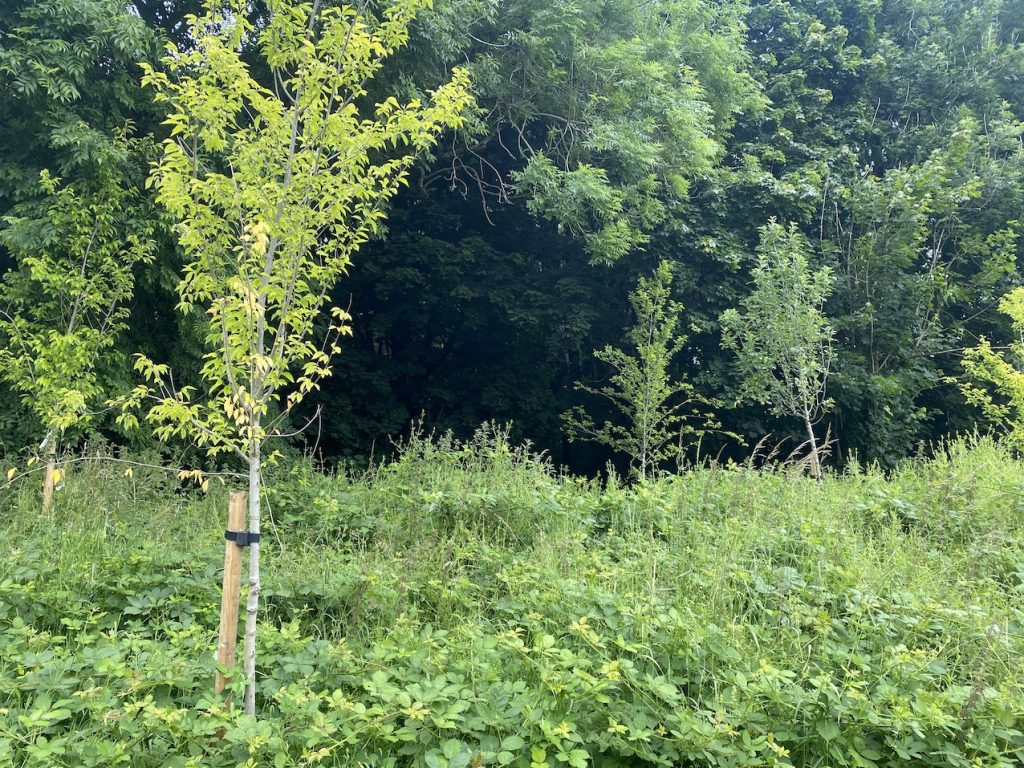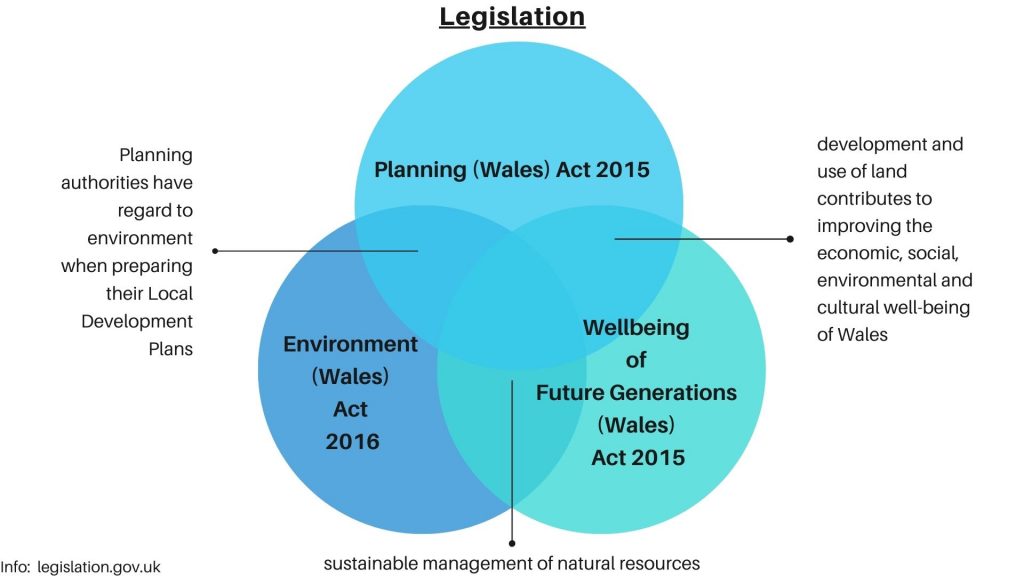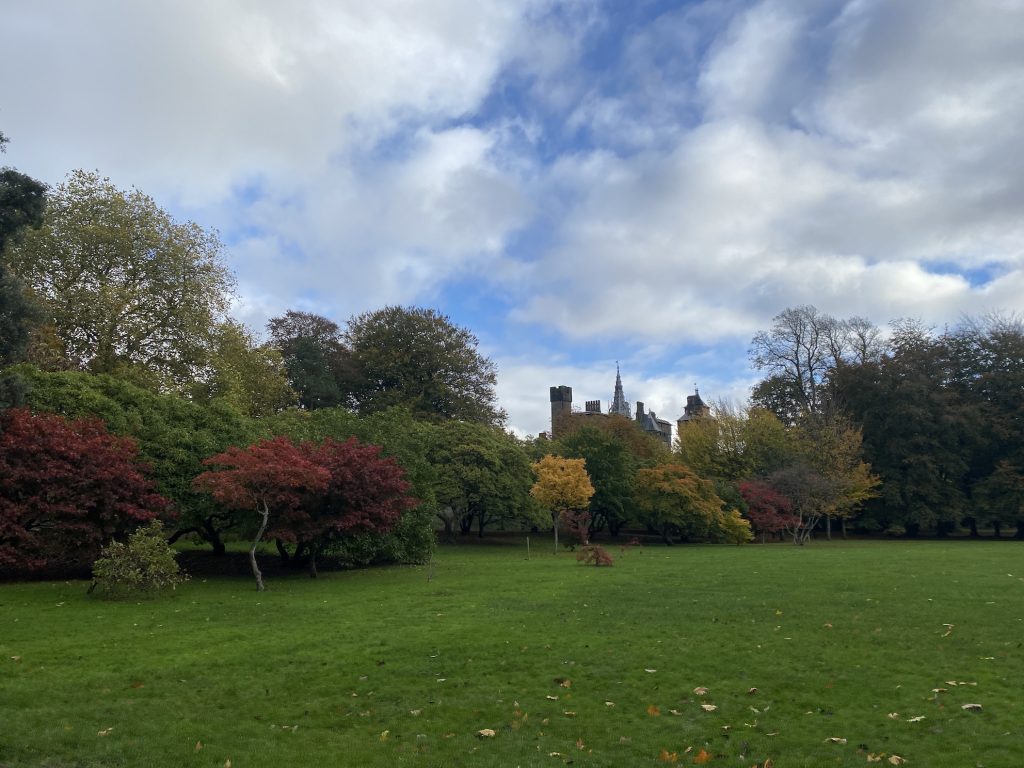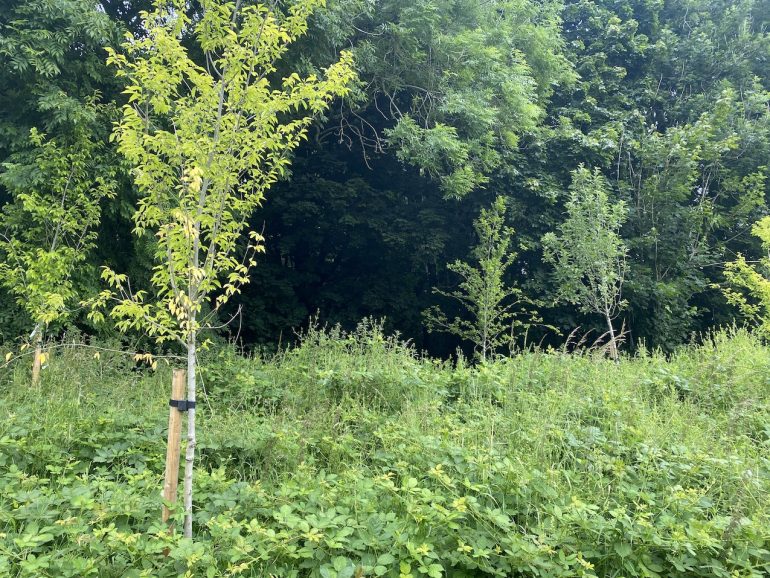Five wards in Cardiff have less than 10% tree canopy cover, well below the Welsh national average of 16.3%
CARDIFF is a relatively green city with 19% tree canopy cover, higher than the Welsh national average.
But its tree cover is unevenly distributed.
Canopy cover in Cardiff’s deprived areas tends to be lower, and relatively less rich in amenity trees.
⬇What are amenity trees?⬇
Amenity trees are non-woodland trees. For example, individual or groups of trees on streets, in gardens and other urban public and private spaces.
According to Natural Resources Wales’ Tree Cover report, five wards in Cardiff have less than 10% canopy cover: Adamsdown, Grangetown, Plasnewydd, Butetown and Splott.
Nigel Pugh, Campaigns Lead for Woodland Trust Cymru said: “The lack of green infrastructure is often associated with more socially deprived areas. That is not always the case, but it is certainly true in former industrial areas in Cardiff, such as Splott.”
Splott has the fifth lowest tree cover in Cardiff, in part due to its industrial heritage as the site of the vast East Moors steelworks, which closed over 40 years ago.
The southern arc of the city is made up of four of the five wards with the lowest canopy cover, as shown in the map above.
In December 2020, Cardiff Council set a target to increase tree canopy cover in the city by 6% by 2030, from 19 to 25%. This represents an additional 839 hectares of canopy cover across the city, an area 14 times the size of Bute Park.
The tree planting is part of Coed Caerdydd, the council’s 10-year programme to increase canopy cover in Cardiff.
Councillor Jen Burke-Davies, Cabinet member for Culture, Parks and Events, said: “In our tree planting programme, what we have tended to do so far is put trees in parks and places where they are relatively easy to plant and maintain, such as in Hailey Park.
“This is understandable and beneficial, but what I would like to see now is to take the tree planting programme beyond the parks, in areas which have fewer trees to make a really noticeable for people.”

Coun Burke-Davies, also ward Councillor for Llandaff North, said: “When addressing inequality in canopy cover, it is about having good local knowledge and working with stakeholders to figure out where new trees are best placed.
“For example, here in Cardiff North, we have an organisation called 1000 Trees. It is their ambition to work with Coed Caerdydd to plant 1000 trees across the constituency by 2024 and they are making good headway.
“I want to improve our street planting but not every street is going to be appropriate. Having an understanding of the local geography not just in terms of the space but how our streets work is vital so we can plant in a way that complements the areas.”
Cardiff Council’s planting this year has been concentrated in three wards: Ely, Caerau and Fairwater, with Caerau alone making up more than a third of the total planting.
⬇The Welsh Index of Multiple Deprivation measures eight types of deprivation⬇
1. Income
2. Employment
3. Health
4. Education
5. Access to services
6. Housing
7. Community safety
8. Physical environment
Of Cardiff’s ten most deprived areas, seven are in Ely and Caerau. Cardiff Council has concentrated planting here as a means of addressing the inequality in distribution of green assets like trees.
However, the council has neglected Adamsdown and Butetown, both more deprived wards, but where it is significantly more difficult to plant due to their post-industrial infrastructure.
Legislation and other barriers
In Wales, three Acts work to dictate whether a tree is preserved, felled, or planted.
The Wellbeing of Future Generations Act states Wales must be ‘A nation which maintains and enhances a biodiverse natural environment’.
The Planning Act works in conjunction with WFGA for the purpose of ensuring that the development and use of land ‘contributes to improving the environmental well-being of Wales’.
Finally, the Environment Act includes a Section 6 duty, whereby ‘a public authority must seek to maintain and enhance biodiversity and in so doing promote the resilience of ecosystems’.

Geoff Hobbs, Senior Natural Resources Planning Officer at NRW, said: “It is a complicated structure where the three Acts overlap. Perhaps most important is the Section 6 Duty in the Environment Act.
“Unfortunately, it is not enough to stop authorities chopping a tree down. But it is at least enough to make them stop and think.”
Woodland Trust Cymru provides councils with an Emergency Tree Fund which focuses on the preservation of trees.
Mr Pugh said: “The emergency tree fund is about assisting local authorities to increase their canopy cover. But in an austerity-struck society, it is difficult to fund the expense of retrofit urban street trees.
“We have a Woodland Under Threat team which monitors the planning system as much as possible to see what threats there are to canopy cover. The largest part of that caseload tends to be things like road building and housing developments, and it is their remit to object to and to screen that planning system.
“We can’t object to every single tree loss – it is just impossible. So we prioritise ancient and veteran trees.”
The Planning Problem
In a housing crisis, local development plans are about expansion and can often be in conflict with aims to preserve or increase canopy cover and green space.
Mr Pugh said: “What it comes down to is whether Welsh councils understand and observe the Wellbeing of Future Generations Act. They ought to consider within planning, when there is an application to fell mature trees, things like a tree’s lifetime eco-services and public goods delivered. That is the long-term thinking we are pushing for.
“The short-term thinking within austerity tends to be if it is council land, they need to offload it to make some money. Local authorities will waiver the loss of a few trees to make it easier for the developer to purchase the plot.
“Local authorities need to understand that they will have to work outside of the ‘business as usual’ that brought us into this climate emergency in the first place.”
Mr Hobbs said: “Large trees are a liability if they are near assets like housing. You have to pay for them to be surveyed and authorities do not want to pay that, so often they will choose to chop them down before paying to maintain them.”
Planning is a complex issue and one which Coun Burke-Davies thinks needs to change.
She said: “Planning laws are devolved to Welsh Government to a degree, so it is our role at Cardiff Council to work to the law.
“For me, planning needs to be fundamentally redrawn in favour of protecting the interests of communities over developers.
“Up here in Llandaff North we do not have much commercial development going on but in the southern wards that is something that they contend with regularly and it is completely understandable that people would see their green spaces effectively being hacked away at.
“With our tree planting initiative, the key criticism we get is ‘what about all the trees you have cut down’, even when there is a net increase in the number of trees in the city.
“Which is understandable – the perception is that there is an attack on green spaces, so we need not just to change that perception, but also to have something tangible to show people in all wards of the city.”

And tree planting initiatives alone are not enough.
Mr Hobbs said: “We find a lot of initiatives on planting trees fail. To get a tree to maturity in an urban setting is difficult and you have to plant excess to ensure that a decent number will survive.
“It is complicated because not only do you need to right tree in the right place, but you also need it to be maintained properly after it is planted.
“Often, tree planting projects have one aim when they need to focus on many – the climate crisis, net zero and social justice.”
Cardiff Council is currently consulting on a replacement local development plan which has been subject to much controversy, with plans to build new housing on greenbelt land.
Mr Hobbs said: “Local development plans are about growth and expansion and can often conflict with aims to preserve or increase canopy cover and green space.
“They will say ‘we need more green space and investment to level up’ but the LDP might tell you ‘we are going to increase our urban sprawl and suburban development and add green space in’ which might help one area but leave others behind.”



